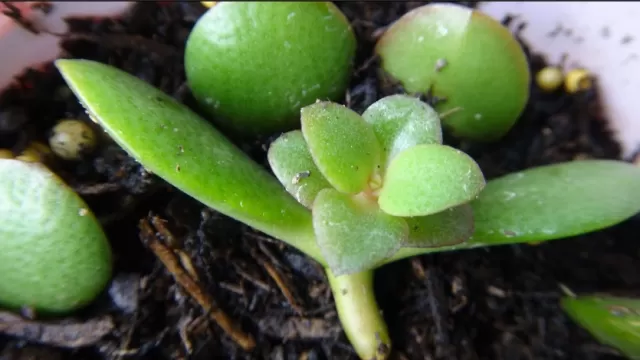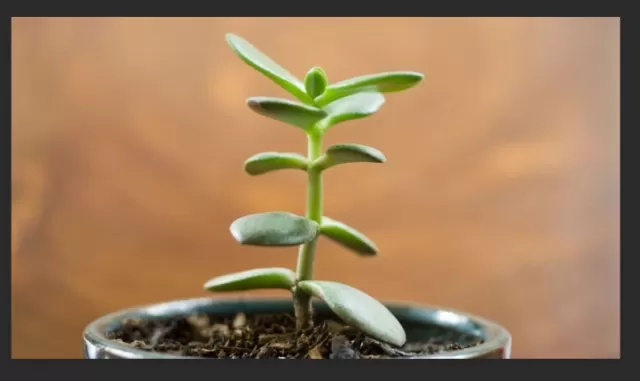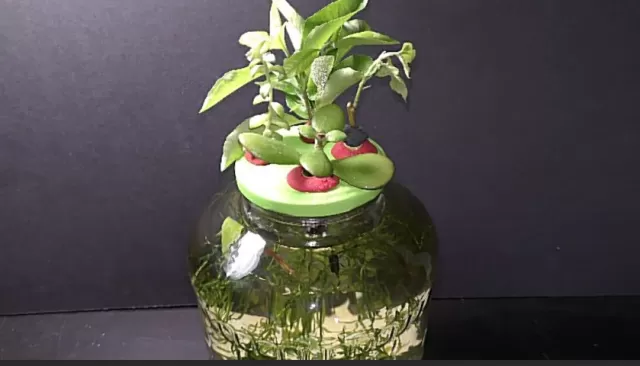Jade Plant Propagation: Growing Your Succulent Collection. Cultivating houseplants brings immense joy, especially when they reach a size suitable for propagation and sharing with those close to your heart. Among these, the jade plant stands out as one of the easiest to propagate, enhancing the gratifying experience of nurturing indoor greenery. The jade plant’s tendency to shed leaves or branches over time becomes an opportunity to create new succulents. Propagation methods vary, allowing for personal preferences to play a role in the process. Whether opting for leaf cuttings, stem cuttings, or offsets, the simplicity of jade plant propagation opens a gateway to not only expand your indoor garden but also share the beauty of these resilient succulents with friends and family. Witnessing the growth of propagated jade plants becomes a testament to the rewards of tending to these resilient and versatile houseplants.
Preparing Jade Plant for Propagation: A Step-by-Step Guide

Selecting the Cutting:
Choose a healthy, mature jade plant for propagation.
Decide whether you’ll propagate from a leaf or a stem cutting.
Cutting the Plant:
Use clean, sharp scissors or pruning shears to take a clean cutting.
For a leaf, cut it cleanly from the stem, ensuring you have a small piece of the stem attached. For a stem cutting, take a section that is a few inches long.
Allowing Drying Time:
Place the cuttings in a warm, bright location away from direct sunlight.
Allow the cut end to dry out for a couple of days.
This drying period is crucial for the development of a callus on the cut end.
Developing a Callus:
The callus is a protective layer that forms over the cut end, reducing the risk of rot and promoting successful root development.
Ensure the environment is warm and dry during this process.
Choosing a Propagation Medium:.
Once the cuttings have developed a callus, you can choose a propagation medium.
This could be a well-draining succulent or cactus mix.
Planting the Cutting:
Insert the dried end of the cutting into the chosen medium.
For stem cuttings, bury a portion of the stem in the soil, and for leaf cuttings, bury the callused end.
Root Development:
Keep the soil consistently lightly moist, not soggy.
Place the cutting in a location with bright, indirect light.
Transplanting:
Once roots have developed (this may take a few weeks to a few months), you can transplant the new jade plant into a larger container or into your garden.
By following these steps, you increase the chances of successful jade plant propagation, ensuring a healthy and thriving new addition to your succulent collection.
Propagating Jade Plant from a Leaf: Simple Steps for Success
Selecting a Healthy Leaf:
Ensure the entire leaf is intact with no small segments left on the stem.
Healthy, mature leaves are ideal.
Removing the Leaf:
Gently twist a leaf to remove it from the jade plant.
Alternatively, use a leaf that has naturally fallen from the plant.
Callus Formation:
Allow the detached leaf to sit in a warm, bright location for a few days.
This period is crucial for the formation of a callus at the cut end.
Preparing the Pot:
Fill a small pot with a well-draining potting mix.
A succulent or cactus mix is suitable for jade plants.
Placing the Leaf:
Lay the callused end of the leaf on top of the potting mix.
You can insert the end slightly into the soil, but ensure the majority of the leaf is resting on the surface.
Watering:
Water the soil thoroughly, ensuring the water reaches the roots.
Drying Period:
Allow the soil to dry out before watering again.
Jade plants prefer slightly dry conditions.
Root Development:
Over time, roots will start to develop from the callused end of the leaf.
Transplanting:
Once a substantial root system has formed, you can transplant the new jade plant into a larger container or your garden.
By following these straightforward steps, you can successfully propagate a new jade plant from a leaf, turning what might have been discarded into a thriving addition to your succulent collection.
Propagating Jade Plant from a Stem: Accelerated Growth in Simple Steps

Selecting a Suitable Stem:
Choose a healthy stem for propagation, ensuring it has two to three leafless nodes at the bottom (where leaves and roots develop) and some leaves at the top.
You may need to remove a few lower leaves to expose the nodes.
Cutting the Stem:
Use a clean, sharp knife or scissors to cut a section of the stem from the jade plant.
Callus Formation:
Allow the cut end of the stem to sit in a warm, bright location for a few days.
This encourages the formation of a callus, which is essential for successful root development.
Preparing the Pot:
Fill a small pot with a well-draining potting mix, such as a succulent or cactus mix.
Planting the Cutting:
Place the callused end of the stem directly into the soil.
Ensure the leafless nodes are buried in the soil, as this is where roots will emerge.
Watering:
Water the soil thoroughly, ensuring it reaches the roots.
Drying Period:
Allow the soil to dry out before watering again.
Jade plants prefer a slightly dry environment.
Root Development:
Over time, roots will emerge from the leafless nodes, establishing a strong root system.
Transplanting:
Once the new jade plant has developed sufficient roots, you can transplant it into a larger container or your garden.
By following these straightforward steps, you can propagate a jade plant from a stem, creating a robust and flourishing new addition to your succulent collection in a shorter timeframe compared to leaf propagation.
Propagating Jade Plant in Water: A Method of Last Resort with Caution

While propagating jade plants in water is possible, it’s advisable to consider this method as a last resort due to potential challenges during the transition to soil.
Justin Hancock emphasizes that water propagation increases the chances of rooting but can make the transition more difficult for the cutting when it’s eventually planted in well-draining soil.
Here’s a step-by-step guide for propagating a jade plant in water:.
Selecting a Stem:
Choose a healthy stem for propagation.
Cutting the Stem:
Use a clean, sharp knife or scissors to cut a section of the stem from the jade plant.
Callus Formation:
Allow the cut end of the stem to sit in a warm, bright location for a few days.
This encourages the formation of a callus, a crucial step for successful propagation.
Preparing a Container with Water:
Fill a container with water.
Ensure that the cut end of the stem is submerged in the water.
Root Development:
Over time, roots will start to develop from the submerged stem.
Transplanting to Soil:
Once a sufficient root system has developed, carefully transplant the rooted cutting into well-draining soil.
Keep in mind that while water propagation can be successful, it’s essential to handle the transition to soil with care.
The rooted cutting may face challenges adapting to the new environment, so monitor its progress closely. Consider this method when other propagation options are not viable, and be prepared for a patient and attentive approach to ensure the cutting’s successful establishment in soil.
*The information is for reference only.